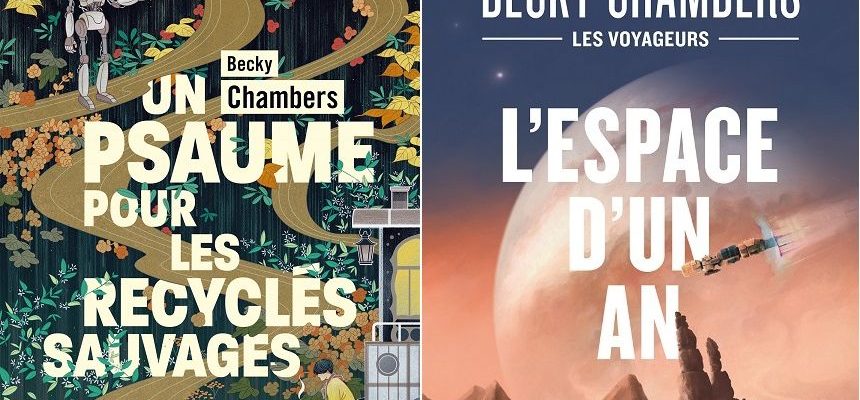His name came up in the mouths of booksellers, publishers and SF fans who we interviewed to talk to us about positive science fiction. Becky Chambers has won over aficionados of the genre. “She’s a real storyteller who knows how to tell stories,” admires bookseller Julien Chapert, of La Croisée des mondes in Paris. She could say anything and I would follow her. We want to live in his novels. »
The American author of feminist science fiction has made a breakthrough since 2014 with her three-volume space opera The travellers and his two short storiesMonk and robot stories (ed. L’Atalante). The first follows life aboard a spaceship where humans and various extraterrestrial species coexist, while the following volumes each explore a facet of this universe. The second series imagines a world where robots have seceded from humans as they transitioned to a more responsible and sustainable world. An excellent entry point into the genre of positive SF.
Utopia, “a story to tell”
In a novel between science fiction, prospective and hard science, Kim Stanley Robinson, a great SF writer known for his Martian trilogytried to imagine The Ministry of the Future (ed. Bragelonne SF). A new UN organization is defending future generations from 2025 to respond to climate change. Resolutely positive, Kim Stanley Robinson maintained in an interview with Release in November the choice not to be dark. “If you want to be left-wing, you have to create utopia, especially in literary terms,” he explains. What is a utopia? It is a place where society is better organized than today. How to get there ? It’s a story to tell, because it’s a problem we haven’t solved. »
In France, Elisa Beiram, author of First day of peace (ed. L’Atalante), or Li-Cam, with Resolution, depict unresolved problems in their novel. Elisa Beiram looked at building peace and resolving conflicts in a world disrupted by global warming. Li-Cam tried in 2019 with Resolution (ed. La Volte) a foray into positive SF, where it tells the life of an isolated utopian community over which an artificial intelligence with solar behavior watches over, while the world has not resisted the great collapse.
The precursors of the 1970s and 1980s
But we can go back further to find the beginnings of positive SF. In the 1980’s, The Cycle of Culture (The Pocket Book) by Iain M. Banks traces the epic tale of The Culture, a galactic society, a model of freedom and abundance, which fights to preserve its ideal of civilization. “It’s of unspeakable grandeur,” praises Yann Olivier, editor at L’Atalante, “including the flaws of what society can wish for. This also shows that people may not want to integrate it. »
Ecotopia (ed. Gallimard), by Ernest Callenbach published in 1975, recounts the resumption of diplomatic connections between Ecotopia and the rest of the United States. This radical ecological society was founded twenty years earlier by the secession of three states on the west coast of the country. And of course, it’s impossible not to mention Ursula K. Le Guin, who revolutionized SF. His novel, The Dispossessed (The pocket book), published in 1974, describes two completely opposed societies: one moon, Anarres, where an egalitarian and free, but poor society lives, facing the planet Urras, prey to tyranny, corruption and to violence. Will a physicist’s invention make it possible to bring the two worlds into dialogue? We won’t tell you any more…

